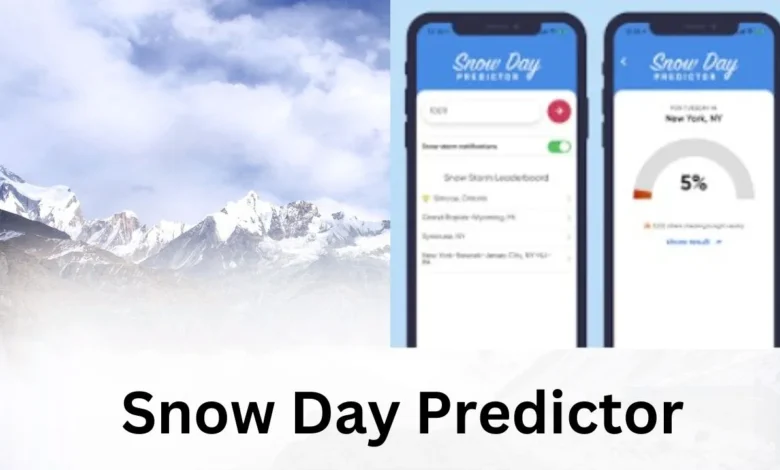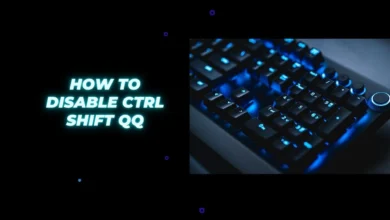Snow Day Predictor: What You Need to Know

A snow day predictor helps many students, parents, and teachers know if school will be canceled because of snow. By using weather forecasts and historical data, these predictors provide a percentage chance of whether schools will close on a snowy day. This article will explain how these predictors work, how reliable they are, and what factors affect their accuracy. We will also look at the pros and cons of using a snow day predictor.
How Does a Snow Day Predictor Work?
A snow day predictor is a tool that takes into account several factors to predict whether a school will close due to snow. It uses weather data such as snowfall amounts, temperature, and wind speed. The snow day predictor also considers school district policies on weather closures. It calculates the chance of a snow day by comparing current conditions with past closures.
These tools gather real-time weather reports and historical data on school closings. Most snow day predictors work by calculating a percentage chance based on these factors. For example, if there is heavy snowfall and low temperatures, the snow day predictor might estimate a high chance of school being closed.
What Data Is Used to Predict a Snow Day?
Snow day predictors rely on several types of data to make their forecasts. The most important data include:
- Weather Conditions: Current and future forecasts for snow accumulation, temperatures, and wind speeds are important factors. If a snowstorm is predicted, the snow day predictor will take into account the amount of snow and how fast it will fall.
- Historical School Closings: Many snow day predictors also use historical data to see how often schools have closed under similar conditions. If a school district tends to close after four inches of snow, the snow day predictor will factor that in.
- School District Policies: Each school district has different rules for deciding when to close due to snow. Some are stricter than others. The snow day predictor uses this information to make more accurate predictions.
Are Snow Day Predictors Accurate?
Snow day predictors are helpful but not perfect. They offer a probability of school closings based on data, but they can’t always predict what school officials will decide. Sometimes the weather might not be as bad as predicted, and schools will stay open even if the snow day predictor gave a high chance of closure.
Factors like school district policies, how fast snow is cleared from the roads, and whether the storm continues overnight can all affect the accuracy of a snow day predictor. Weather forecasts are also not always right, which can lead to incorrect predictions.
What Factors Influence a Snow Day Prediction?
Several factors can influence the chance of a snow day. Some of the most important include:
- Amount of Snowfall: The more snow that falls, the higher the chance that schools will close.
- Temperature: Extremely cold temperatures can lead to school closures, especially if the wind chill is dangerous for students waiting at bus stops.
- Road Conditions: If roads are icy or snow-covered, buses may not be able to safely transport students.
- Time of the Storm: When the snow starts and ends matters too. If a storm hits during rush hour or in the middle of the school day, schools are more likely to close.
- School Policies: Each school district has its own rules about when to close. Some districts close more easily than others.
How Do Schools Decide to Close?
Schools use a combination of weather data, road conditions, and safety concerns when deciding whether to close. District administrators often consult with local weather experts and transportation departments to assess road safety. If the roads are unsafe for buses, schools are more likely to close.
School officials also think about how cold it is and whether students will be able to get to school safely. The snow day predictor gives them an estimate, but the final decision is made by the school district.
How Can You Use a Snow Day Predictor?
You can use a snow day predictor to get an idea of whether school might be canceled. While it’s not 100% accurate, it can give you a good sense of the likelihood of a snow day. Many websites and apps offer snow day predictions, and you can check them the night before or early in the morning to plan your day.
It’s a good idea to check the snow day predictor alongside official school announcements. The snow day predictor might say there’s a 70% chance of a snow day, but the school could decide to stay open anyway.
What Are the Benefits of Using a Snow Day Predictor?
There are several benefits to using a snow day predictor:
- Planning Ahead: A snow day predictor can help students and parents prepare for a possible day off. It gives them a heads-up on whether school might be closed.
- Convenience: Checking a snow day predictor is quick and easy. You can look at the prediction without having to wait for official announcements.
- Fun for Students: Many students enjoy checking the snow day predictor to see if they might get a day off from school. It adds a little excitement to a snowy day.
What Are the Downsides of a Snow Day Predictor?
Although snow day predictors can be useful, there are some downsides:
- Inaccuracy: The predictor is based on data, but it’s not always right. There’s always a chance that school will stay open even if the prediction is high.
- Over-Reliance: Some people might rely too much on the snow day predictor and not check the official school decision, which could lead to confusion.
- False Hope: Students might get excited for a snow day, only to find out that school is still open. This can be disappointing.
Pros and Cons of Using a Snow Day Predictor
| Pros | Cons |
|---|---|
| Helps plan for possible school closings | Not always accurate |
| Convenient and easy to use | Can create false hope |
| Provides a fun way to check for snow days | Might lead to over-reliance on predictions |
| Gives a heads-up on snow days | Does not replace official announcements |
Can a Snow Day Predictor Replace Official Announcements?
While snow day predictors are fun and useful, they cannot replace official school announcements. The final decision on school closings always comes from the school district. A snow day predictor might give a high chance of school closing, but the district could still decide to stay open.
Students and parents should always check their school district’s website, listen to local news, or sign up for text alerts from the school for the final word on school closings.
Conclusion
Snow day predictors are a handy tool for guessing whether school will be closed during snowy weather. They use data like weather forecasts and past closures to make their predictions. While they can be helpful, they are not always accurate, and it’s important to check official school announcements. By understanding how snow day predictors work, you can make better plans when snowy weather hits.




